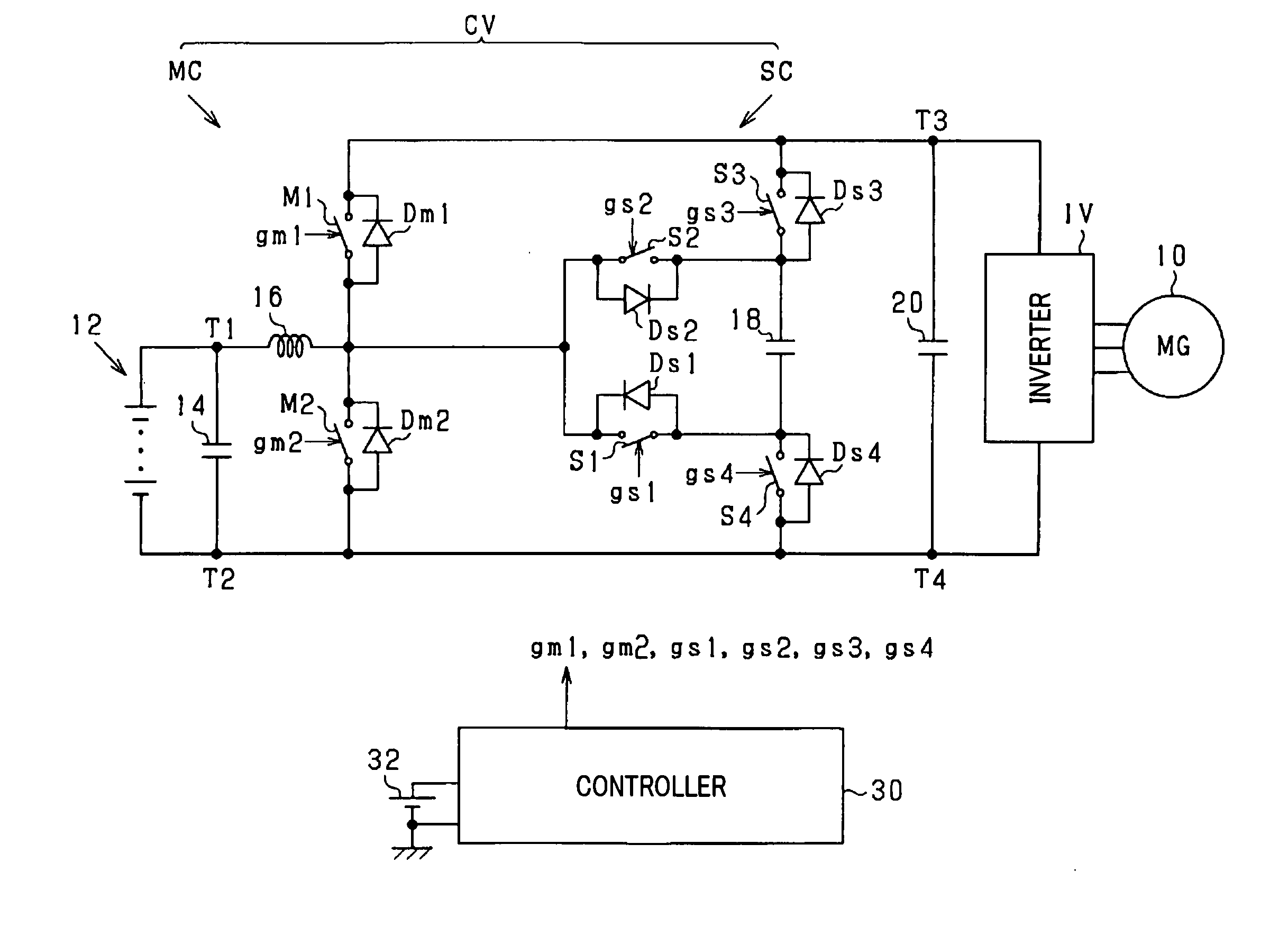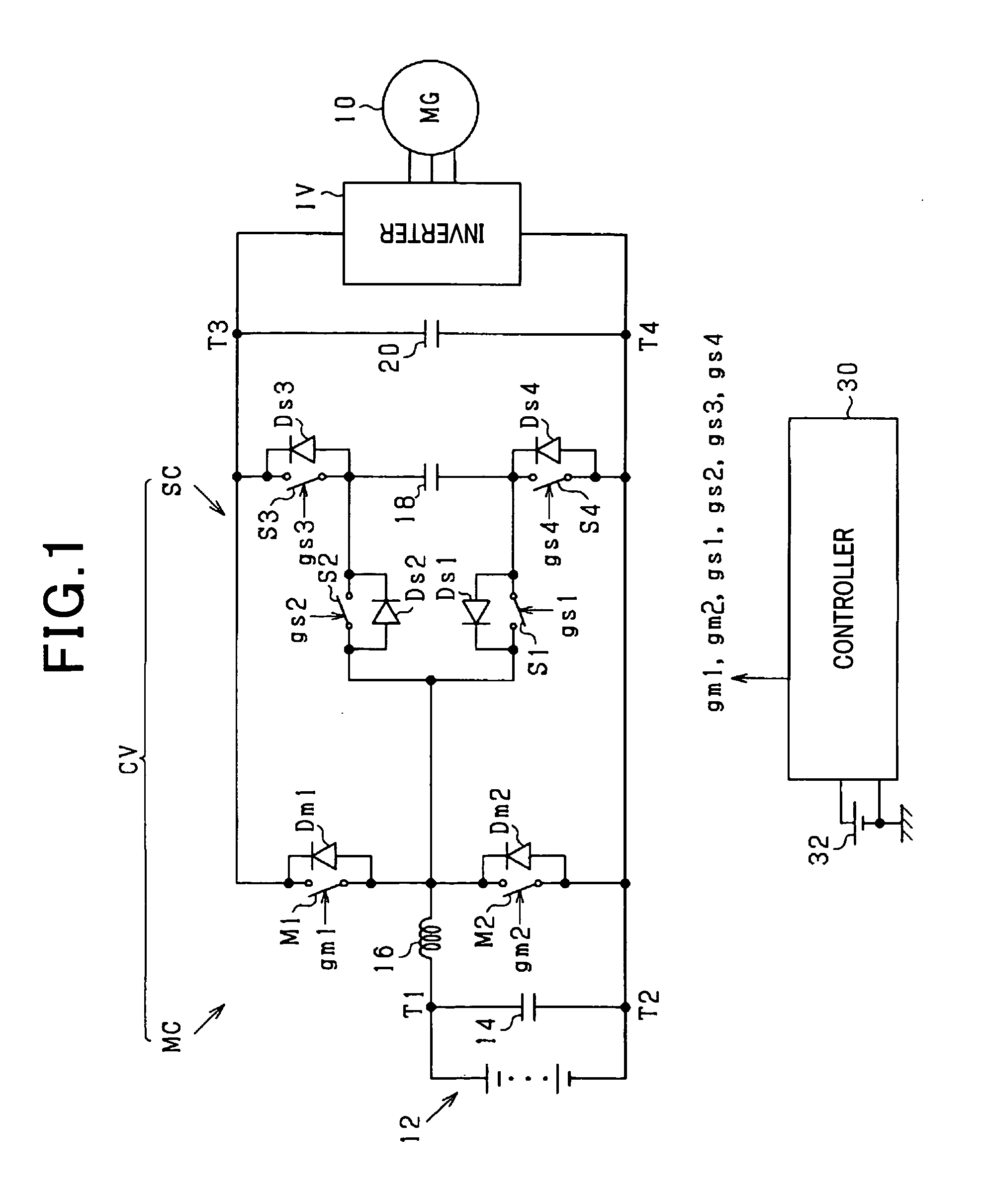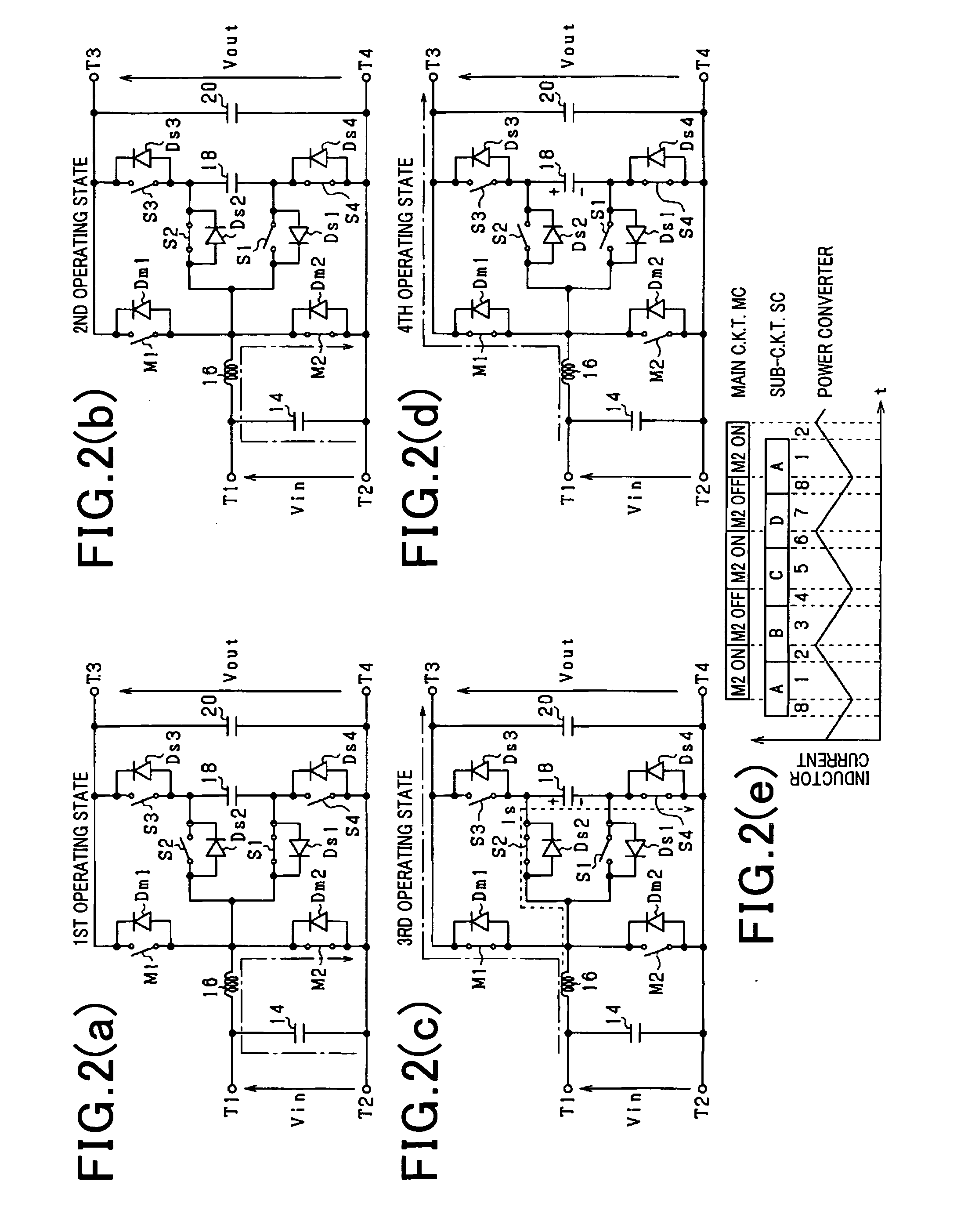Compact power converter with high efficiency in operation
a compact, power converter technology, applied in the direction of electric variable regulation, process and machine control, instruments, etc., can solve the problems of increasing the size of the power converter, reducing the efficiency of the power converter operation, and increasing the switching loss, so as to improve the structure of the power converter apparatus, high efficiency in operation, and compact size
- Summary
- Abstract
- Description
- Claims
- Application Information
AI Technical Summary
Benefits of technology
Problems solved by technology
Method used
Image
Examples
first embodiment
[0047]Referring to the drawings, wherein like reference numbers refer to like parts in several views, particularly to FIG. 1, there is shown a converter control system designed to control an operation of a power converter CV which is used in driving an main engine mounted in an automotive vehicle.
[0048]A motor-generator 10 is used as the main engine of the vehicle and has an output shaft (i.e., a rotating shaft) connected mechanically to driven wheels of the vehicle. The motor-generator 10 is joined electrically to a high-voltage battery 12 and a capacitor 14 through an DC-AC converter an inverter IV) and the converter CV. The high-voltage battery 12 is a secondary cell (also called a storage battery) whose terminal voltage is higher than one hundred volts.
[0049]The converter CV is equipped with a typical chopper circuit as a main circuit MC. The main MC consists essentially of a series-connected assembly of main switches M1 and M2, an inductor 16 connecting between a joint of the ...
second embodiment
[0070]The converter control system of the second embodiment will be described below.
[0071]In the converter control system of the first embodiment, when the electrical energy charged in the inductor 16 in the power running made is not greater than that in the snubber capacitor 18 charged until the output voltage Vout of the converter CV, it is impossible to make the electric current flow through the diode Dm1 (i.e., the main switch M1) in the operating state B. In this condition, the switching loss occurs when the operating states of the sub-switches S1 and S3 are changed to connect the snubber capacitor 18 parallel to the main switch M1.
[0072]The energy to be charged in the snubber capacitor 18 is proportional to an electrostatic capacity or capacitance thereof and thus may be made to be smaller than the energy to be charged in the inductor 16 by decreasing the capacitance of the snubber capacitor 18. When the energy of the inductor 16 is much great, such decreasing of the capacitan...
fourth embodiment
[0085]FIG. 8 is a flowchart of a sequence of logical steps or program to be executed by the controller 30 of the converter control system of the fourth embodiment to control operations of the sub-circuit SC during the power running mode of the converter CV which include a special operation, as described below, to be executed when the current flowing through the inductor 16 is small. The program is to be executed at a regular interval.
[0086]After entering the program, the routine proceeds to step S20 wherein it is determined whether a given period of time has passed or not after the main switch M2 is turned off. This determination is made for determining whether the time when the operating state B or D is to be entered has been reached or not. The given period of time is preferably selected to be longer than or equal to the time required for the main switch M2 to be turned on in response to the on-signal from the controller 30. If a YES answer is obtained, then the routine proceeds t...
PUM
 Login to View More
Login to View More Abstract
Description
Claims
Application Information
 Login to View More
Login to View More - R&D
- Intellectual Property
- Life Sciences
- Materials
- Tech Scout
- Unparalleled Data Quality
- Higher Quality Content
- 60% Fewer Hallucinations
Browse by: Latest US Patents, China's latest patents, Technical Efficacy Thesaurus, Application Domain, Technology Topic, Popular Technical Reports.
© 2025 PatSnap. All rights reserved.Legal|Privacy policy|Modern Slavery Act Transparency Statement|Sitemap|About US| Contact US: help@patsnap.com



